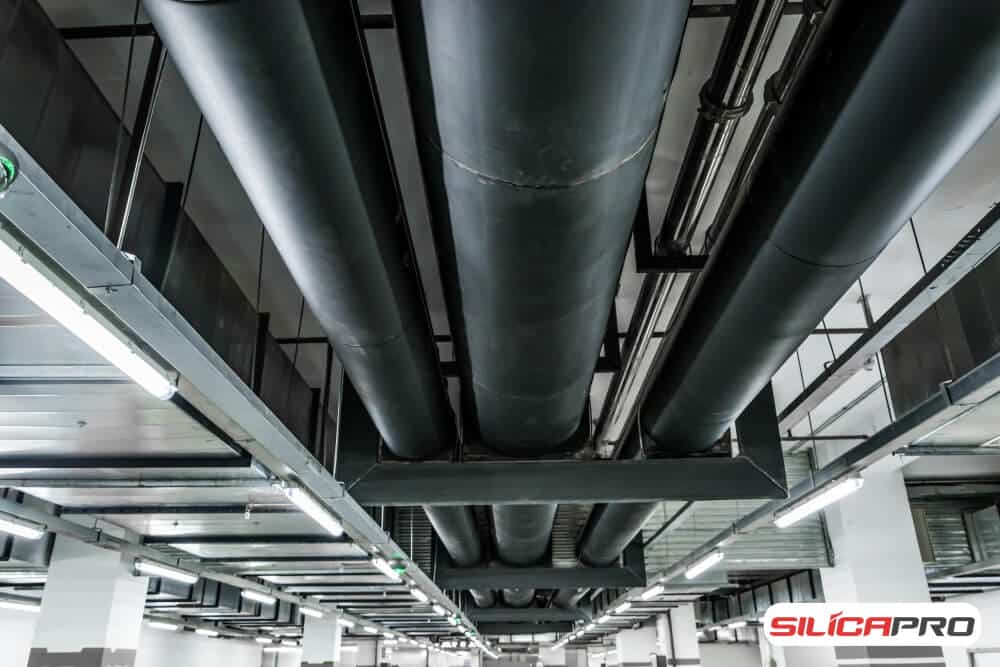Most of us probably already know about fiberglass. Yes, this material has many benefits in everyday life. One item that utilizes this material is a fiberglass duct. The heating system is one example of its use. Then what are the characteristics of fiberglass ducts material?
Contents
10 Ways of Fiberglass Ducts Application
Currently, many HVAC industries still use metal as the primary material, but now the trend is shifting to fiberglass ducts. We know that this material is a viable and sophisticated alternative to metal. Fiberglass has properties that are no less good than the other materials in HVAC. It is sturdy, strong, and lighter, long-lasting, multifunctional, and composed of chosen components.
In terms of costs, using fiberglass can help reduce costs so that it is more efficient. Besides, you can also use fiberglass because it can provide optimal protection from rust but is easy and minimalist to maintain. That’s why it is common to use fiberglass in 10 applications.
- The use of fiberglass is not limited to the HVAC industry. Many devices use fiberglass. This material is not corrosive. You can find it in ventilation systems in many sectors, corrosion-prone environments, and underground exhaust ducts.
- Many industries use fiberglass channels. This material can withstand many functions and is anti-corrosion.
- Air ducts that are corrosion-resistant to chemicals.
- Beverage and pharmaceutical industries require fiberglass items for wet areas and chemical drug products.
- You can find fiberglass in areas that are very easy to rust. In this environment, fiberglass is more suitable than galvanized, steel or PVC.
- Water and wastewater industry because these channels usually drain air with highly corrosive properties, for example, the result of the reaction of activated carbon.
- The food industry is very good at using fiberglass because food processing processes require hygienic airflow. It makes perfect sense because the food industry must ensure consumer safety after consuming food products.
- In the paper industry, we use fiberglass channels for resisting corrosive chemicals during paper processing.
- Fulfilling needs in the government and military sectors.
- The concentration process will cause condensate to form. Apply fiber channels to protect against chemicals emerging from the evaporation process.
Primary Reasons for Using Fiberglass Ducts
Mostly, the use of fiberglass is in heating, cooling, and ventilation systems. It is not a breakthrough, but it has been massive use of this material. Why is this material so good and useful?
- The first reason is the ability to reduce noise in areas close to HVAC and central rooms. Generally, devices and components in heating, ventilation, and cooling systems generate noise. It is the function of using fiberglass.
- Furthermore, we know that installing an air conditioner can cause an increase in bills, for example, if there is air that is just released. That is the function of the ducts as the thermal insulation material. Therefore cooling-system can work optimally so that the bills remain under control.
Continuous use brings fiberglass to a different state from the first time it was installed. It is natural because this material is related to air condition, temperature, and humidity. In long-term impact, you will see the primary coating damaged.
Then, it will have an effect on the ventilation system. Not infrequently, damage to the seal leaves deposits on cooling, ventilation, or heating devices. A logical question will arise. Is the air entering the room still suitable? What is the impact on body health?
Of course, do not generalize the case. The impact on health depends on the size of the fiber and the type of exposure due to fiberglass. Initial symptoms usually cause mild to acute irritation of the eyes, skin, and respiratory tract. However, we can avoid this by taking the appropriate treatment steps.
Maintaining the Cleanliness of Air with Fiberglass Ducts

To maintain the cleanliness of indoor air, it is highly recommended to clean them periodically and regularly. Previously, to maintain the air ducts and clean them the safest way was to replace them. The way to do this is by removing the old channel and replacing it with a new channel.
Of course, this work requires a lot of money. However, currently developing technology means that the maintenance (cleaning) process is sufficient as long as it is carried out properly by professional staff.
With or without fiberglass, ducts must be cleaned as a preventive measure to keep the air clean. Also, perform procedures for maintaining air ducts such as inspections, examine carefully, and check which parts need repair.
Always be aware of changes, for example, contaminated air or air that feels more humid than usual. What do you think? Any interesting experience during the use of fiberglass ducts?
